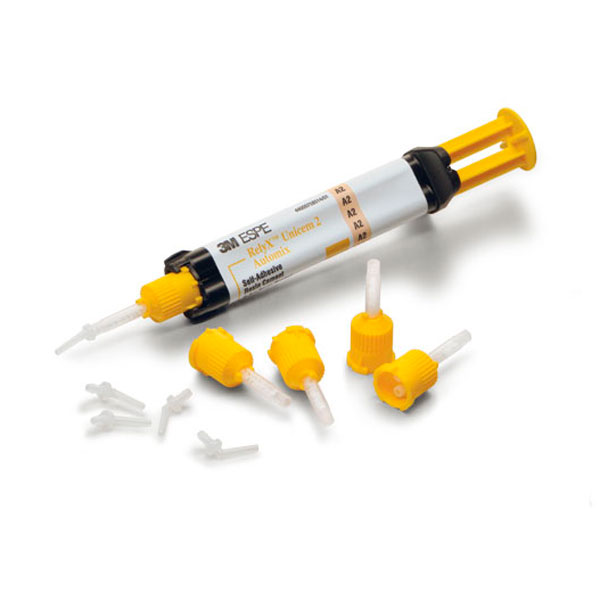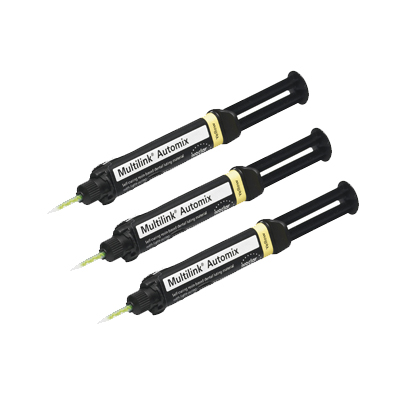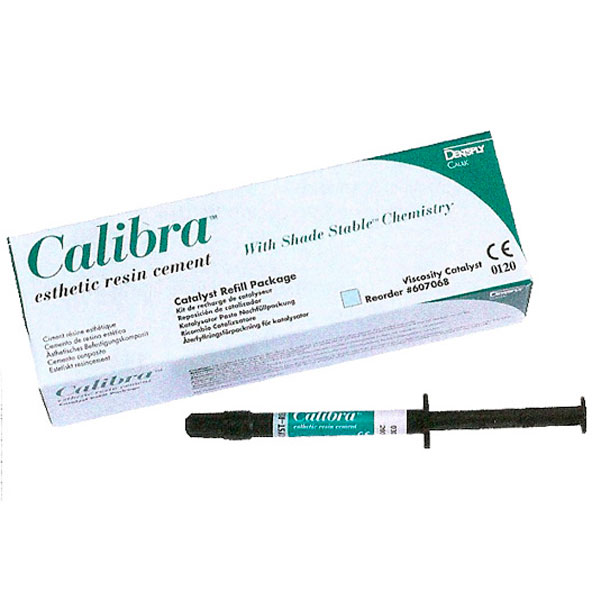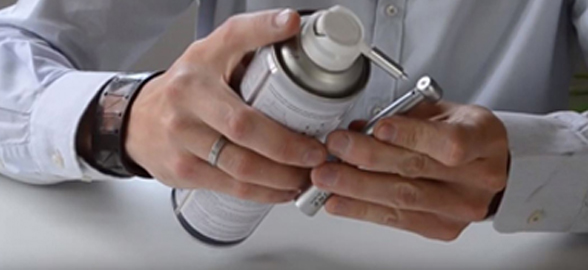Resin cements are cements based on polymers designed to adhere to the tooth structure. Very commonly used for general use, as specific uses (cementing of crowns and bridges, orthodontic brackets ...) In this post we will describe both its components, as well as properties, classification, advantages and disadvantages of it.
Components of resin cements:
Among its components, we find the monomer methacrylate, functional monomeric acids and filler. This first is used as a resin base. The functional monomeric acids demineralize and facilitate adhesion to the tooth surface. The formation of an aqueous insoluble complex between calcium and MPD depends on these acids, while 4-META and phenyl-p form a calcium complex with greater stability to dissolution. Finally we have the filling, composed of barium fluoroaluminosilicate glass, calcium aluminosilicate strontium glass, quartz, colloidal silica, Iterbio fluoride and other glass fillers. Its partial dissolution neutralizes the acidity of the resin and releases ions of sodium, calcium, silicate and fluorine forming part of the setting.
Properties of resin cement:
- Its setting time at 37ºC ranges from 2-4 minutes.
- The film thickness is 25 microns.
- The adhesion strength to the dentin ranges from 18 to 30 MPa
- Compressive strength: 70-172 MPa.
- Tensile strength: 34 to 37 MPa.
- Its solubility to water ranges between 0.01%.
- Elastic module: 2.1-3.1 GPa.
Classification of resin cements:
- Self-healing chemical.
- Cured by the effect of light (light-cured)
- Dual.
Advantages of resin cements:
- They present a compressive resistance in 50% greater than zinc phosphate and low solubility to oral fluids.
- Double tensile strength compared to glass ionomer and zinc phosphate cements, in addition to offering stability to a possible change in environmental pressure.
- They have a range of colors, and are ideal for the oral environment.
Disadvantages of resin cements:
- They have a lower elasticity to zinc phosphate, and their excesses are usually more difficult to remove.
- Partial inhibition in the presence of zinc oxide and eugenol, and by desensitizers dentiners and pulp protectors.
- Low retention in cemented structures on implants and its cost is higher.
Properties of resin cements:
- Physical properties: Mixing, spatulation time, temperature, external contamination and type of fillercan influence the physical properties of resin cements. There are two mixing systems: manual and automixing. In the first case, the cement may not be mixed uniformly and air bubbles may form, and in the second case the paste may not be completely mixed since this could be limited by the length and anatomy of the mixing nozzle.
- Shrinkage: phenomenon that can be found in resin cements during the polymerization, leading to microfiltration. This contraction can depend on the amount of filling, so we have that the fluid resins have a contraction of 6% and the adhesive resins 13%.
- Flow: these resin cements have thixotropic properties, good fluid and a lubricating effect that reduces friction between the prosthesis and the dentin preparation.
- Marginal adaptation: The use of the adhesive agent with the resin cement reduces the presence of microspaces. After applying the acid etching, the adhesive has a characteristic of high flow and hydrophilicity and favors a good interaction with the dentin forming a structure of hybrid layer consistent and good sealing.
- Biocompatibility: that is, it does not cause pulpal damage. However, there may be situations that affect the integrity of the tooth, such as the presence of low ph or dentinal moisture. This is due to the fact that one of its components, monomeric acid, when in contact with dental calcium, generates a buffer effect, raising its ph to 5, thus avoiding pulpal irritation. On the other hand, the presence of moisture affects the polymerization of the adhesive monomers. This moisture situation prevents proper polymer / monomer conversion.
- Aqueous absorption: the resin cement absorbs water, which increases the volume of the resin matrix,and breaks the hydrogen bonds, leaving water between the hydroxyl groups. This water ingress by sorption causes hydrolytic degradation of the resin matrix at the matrix / filler interface and as a consequence loss of mass and detachment of the filling decreases its resistance to bending.
- Aesthetics: There are currently a variety of shades in resin cements to be used in translucent restorations. In addition there are accessories of colors to be able to correct the tones matching to the precision the color of the cement together with the restoration.
Cementation of a Glass Ceramic Inlay with RelyX™ Ultimate Adhesive Resin Cement
Recommendations for resin cements
At Dentaltix, we have a selection of resin cements that we recommend to you:
For more news from the dental sector, follow us on our social networks and if you liked this post, take a look at the rest of them where we talk about the other types of dental cements.












